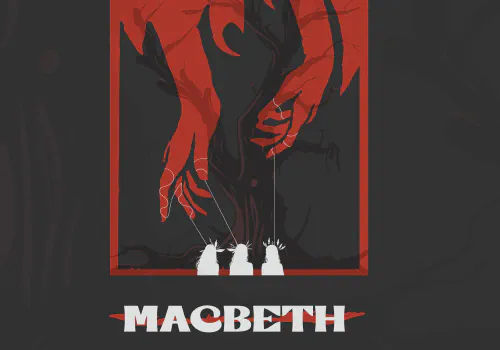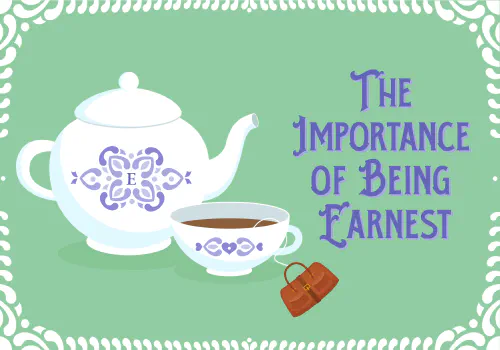OBJECTIVE
Students will demonstrate their ability to analyze the character of Hamlet by exploring how he behaves and acts in his relationships.
UTAH CORE STANDARDS
- Reading: Literature Standard 1
- Reading: Informational Text Standard 6
- Literacy Standard L3.T.CO.1
INTENDED AUDIENCE
9th grade – 12th grade
TIME
60 — 90 minutes
MATERIALS
- Poster paper/markers
- Hamlet Sides
OUTLINE
- PRE-HOOK
Share the following context/background of the writing of Hamlet (from http://artsemersonblog.org/2018/02/09/a-brief-history-of-hamlet/ ).
William Shakespeare’s Hamlet precedes its own reputation. It was Shakespeare’s most popular play during his lifetime and remains the most produced work of his to date. In fact, it is speculated that Hamlet is performed somewhere every minute of every single day. Most people unknowingly quote Hamlet with phrases such as “in my mind’s eye” or “what a piece of work.”
While Hamlet reigns as a cultural staple, the play’s origin is often contested. There are several theories about the inspiration for Hamlet, from 12th century Danish literature to Indo-European character tropes. Knowing precisely where Shakespeare found his inspiration for Hamlet is practically impossible, but these glimpses into history give us some possible context clues.
Beyond historical influences, Shakespeare may have taken inspiration from his own life. In 1596, Shakespeare’s only son, Hamnet, passed away at only eleven years old. Hamlet’s own struggle with grief mirrors Shakespeare’s, each traversing through the after effects of loss, not to mention the similarity between the titular character and his son’s name. However, most scholars argue that the origin story of Hamlet is too obviously derived from legend and that Hamnet’s death was auxiliary in Shakespeare’s writing process. - HOOK
Divide the students into smaller groups of 3-4. Give each group a poster paper and markers and have them answer the major dramatic question: WHO and WHAT is Hamlet? Have them write/draw/express whatever they know about Hamlet, the person, and “Hamlet” the play (storyline, other characters, important elements, etc.). After all the groups have completed their poster, hang them around the room and give students time to go to each poster. Discuss together similarities, unique observations, etc. - TRANSITION
Ask students: Have you ever had anyone misunderstand a text you have sent to them? Why? Possible answer is that they could not see into your mind, only what you were ‘saying’. Explain to students this is the power of dramatic writing. In a play, an author can only rely on what a character says (lines) and what they do (stage directions). As an audience, or as actors, we need to look for clues in the lines to get into the mind of the characters.
Help the students understand that over the next few class periods, they will be looking closely at some of the lines in this play to try to figure out who Hamlet is in order to understand why he is such an important character. Remind them and stress to them dramatic writing leaves a lot to interpretation, just like life, so Hamlet could be thinking a lot of different things. But ultimately, Hamlet is actually a lot like your students. And the teacher. That’s why he is such an important character. - INSTRUCTION - TEXTUAL ANALYSIS
Pass out the script sides for Lesson One. Explain that the class will be looking at the first scene in which Hamlet appears in the play to see who he is as he starts the journey.
Highlight that Hamlet, the one the play is named after, does not appear in the first scene of the play. It starts when some supporting characters have an interaction with a ghost. Ask students: Why would a writer want to start a play that way? (Capture the attention of the audience, create a mood, introduce a character that might be important later one.)
Move the class on to scene two so they can meet this Hamlet guy.
Ask students: What is the first question asked of Hamlet? (How is it that the clouds still hang on you?) What does that suggest about Hamlet?” Have students scan through the Gertrude’s first line to her son. What information does she give us about what she sees in Hamlet (Dark clothes, heavy eyes) and why he looks or acts like this? (The death of his father.)
Have students read from Gertrude’s first line in the scene through the end of Hamlet’s longer response (Seems, madame!). What do we learn about Gertrude, Hamlet, and their relationship in this exchange?
Help the students connect the situation to themselves - so they can relate to Hamlet: Have you ever felt like someone was trying to tell you how you should act or feel in a particular situation? How did it make you feel? How does Hamlet feel? How do his words communicate that?
Together as a class, read through the rest of the scene until Claudius and Gertrude leave. - INSTRUCTION- SOLILOQUY
Point out that after Gertrude and Claudius leave, Hamlet is alone, and can speak honestly. He can really explore what he thinks and what he feels. In these moments, he speaks his thoughts out loud for the audience to hear. Shakespeare used this technique, called soliloquy to reveal character.
Have the class look through the passage and underline any words they don’t know. Students can work together to define the words they don’t know or are confused at, or use other resources to define them themselves.
Review sentence structure in Shakespeare’s writings- verse or iambic pentameter. This means that the rhythm is biased towards a pattern in which an unstressed syllable is followed by a stressed one (iambic) and that each normal line has ten syllables, five of them stressed (pentameter). Verse is metered, an orderly form that demands:
-
Sharper focus and concentration
-
Complex images
-
Longer metaphors
-
“Heightened” use of language
-
Hidden directions and acting notes
-
Discover what the important words are
Blank verse is unrhymed verse. It needs to be flexible so sometimes word order is scrambled a bit to fit rhythm and meter, but it is still emotional - the rhythm of our heartbeat.
Conduct the Cardiogram activity (Creative Shakespeare, p.118): Pair students up. Each partnership should have a blank piece of paper held landscape orientation with three horizontal lines across it ⅓ of the paper width apart with + at top line and - at bottom line. Using the soliloquy, have each student look at each line in the text. If regular 10 syllables make a dot on the middle line. If more than 10 make dot on + line, if less make dot on - line. At the end of the speech connect the dots. It should look like a cardiogram (heart beat monitor chart). Ask students questions such as: “Is cardiogram consistent or go up and down? What is the character saying or what is happening in each line? Is there a pattern? Where are more changes or most constant? Why? How does the cardiogram show Hamlet’s frame of mind in this moment?”
Now that we know the words, and know that the sentence structure might be off, read through it out loud together as a class as a choral read. Have students respond to the question: What does Hamlet reveal about who he is at the beginning of this story in this soliloquy?
Show students that after sharing his heart and mind to himself, and the audience, he says something profound: re-read the final line of the soliloquy. (But break, my heart, for I must hold my tongue.) He feels like he needs to not share these things that he thinks or feels. Ask students: Why does Hamlet, or us, think we must hold our tongues?
As seen in the earlier passage, when he does not speak, his mother and step-father assign thoughts and feelings to him. Ask students: Does that happen to us? Are we defined by internal or external forces?
Study the final section of this scene: see how Hamlet is more open with his peers. Have the students get in groups of three, assign roles to be read out loud, and read the exchange provided in their groups. Ask the groups to respond to the following questions: What do you notice about this exchange between friends? (shorter lines, easier to understand) What does that tell us about the character and relationships?
ASSESSMENT
To conclude class, have the students write up a brief response to the question: In what ways are Hamlet and I similar? Have them consider things discussed and read in class today.
ENRICHMENT
Video: Approaching Hamlet: Part 1










